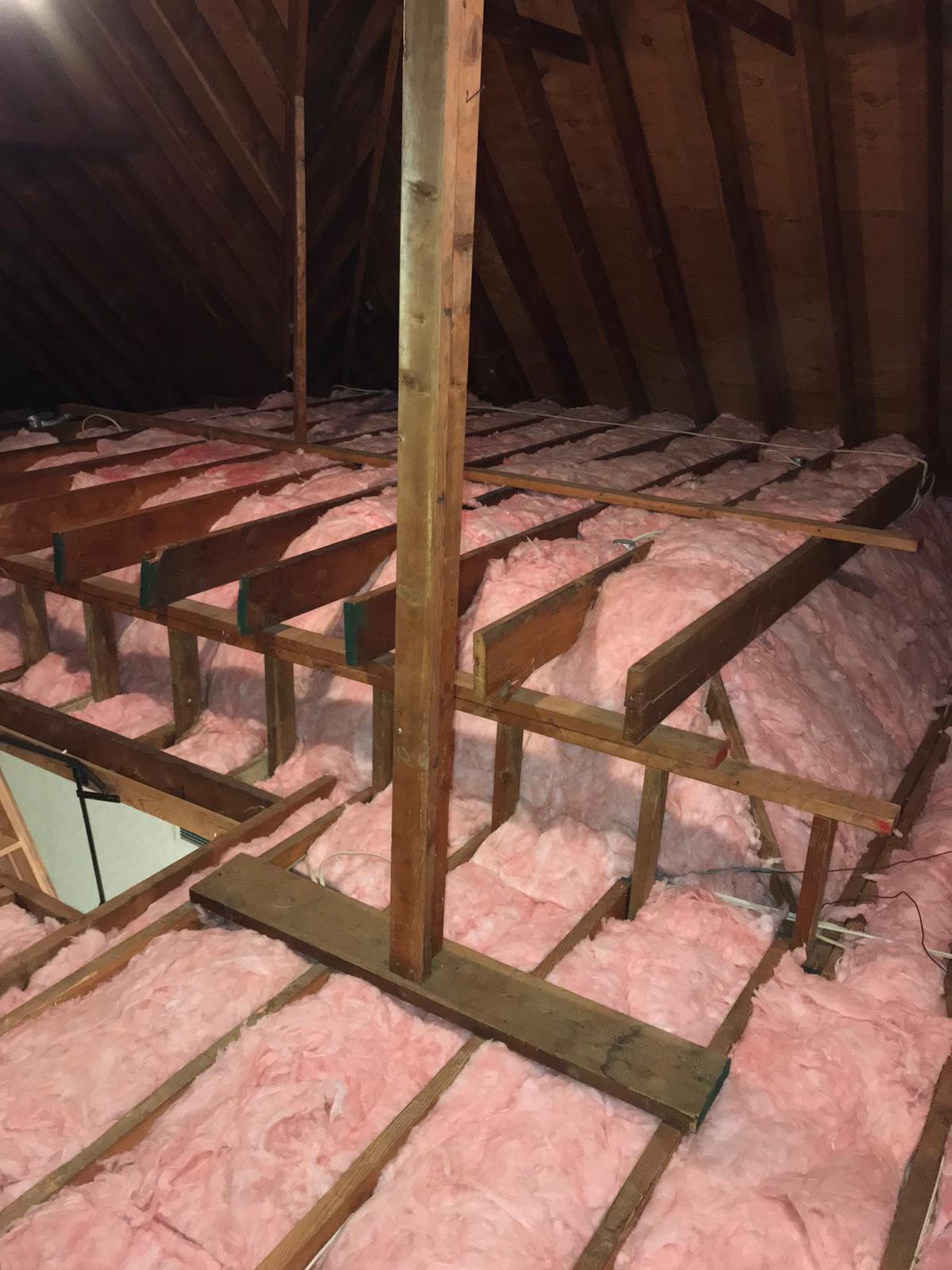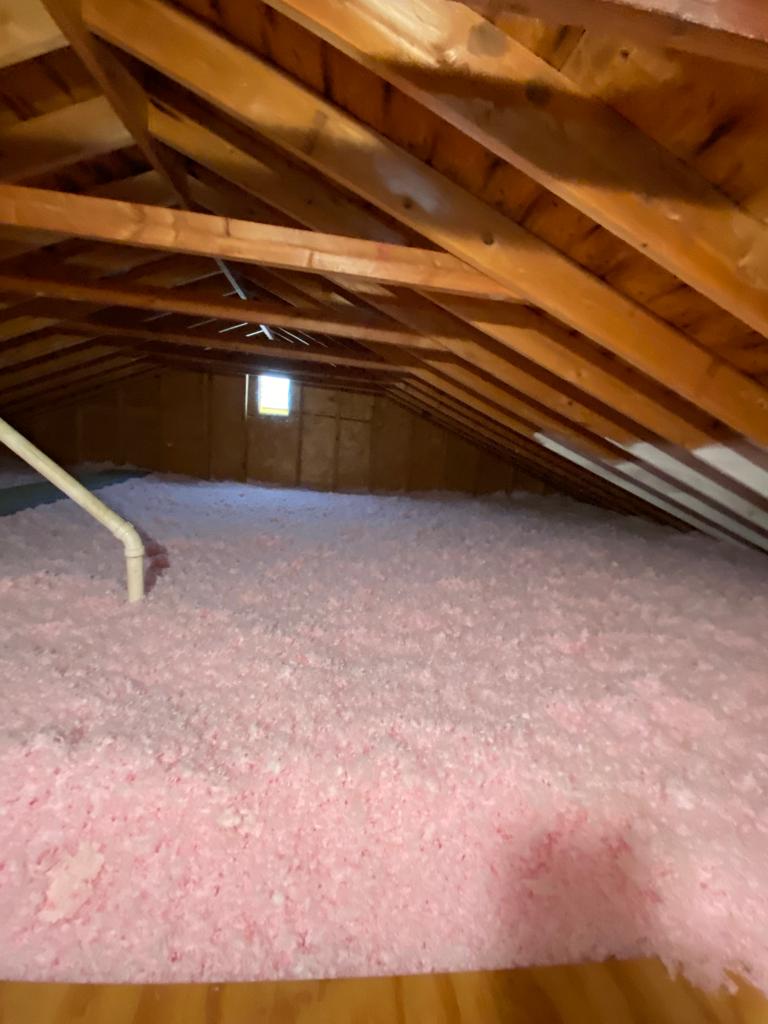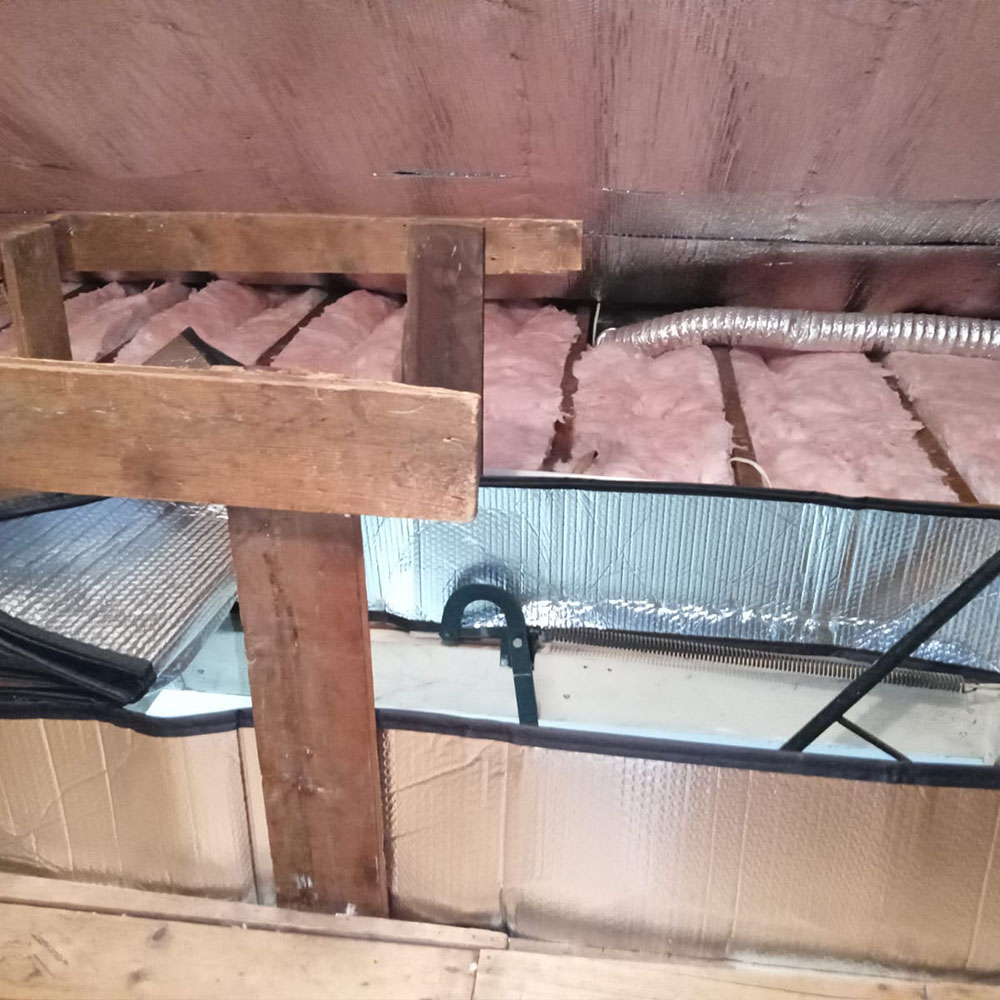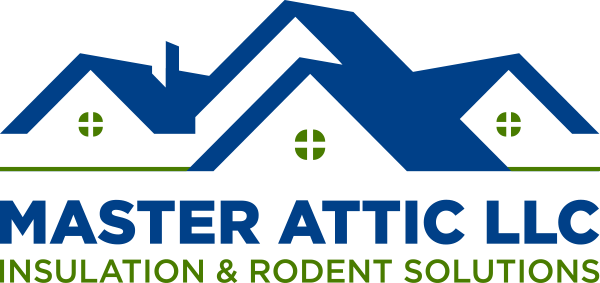
5 Reasons to Hire a Professional for Attic Insulation Removal
5 Reasons to Hire a Professional for Attic Insulation Removal If you’ve considered removing your attic insulation, you may have considered doing it alone. However,
Insulation is essential in keeping your home’s temperature comfortable. If your attic or crawl space isn’t running as well as it once did, you should consider that it’s time for an insulation replacement.
As you continue to read, you’ll learn more about what blown-in insulation is, why and how you should remove it, and why you should reach out to a professional when it’s time for installation.

Blown-in insulation is a loose insulation routinely used in attic and crawl space areas. Blown-in insulation is made of fiberglass or cellulose and can be installed into hard-to-reach areas using blower equipment and hose attachment.
An insulation’s heat resistance will become measured in R-value, with colder environments requiring higher R-value insulation that professionals must install. You can view the Department of Energy’s website to determine the insulation you need from your home.
Have you noticed that your insulation isn’t doing the job it once did? If you’ve seen it’s not working as efficiently as it should, it may be time to remove your blown-in insulation.
Some commonly known reasons for removing blown-in insulation are mold growth, rodent damage, or simply because you plan to remodel your attic. Rodents such as mice, rats, squirrels, or raccoons can enter your attic and cause significant insulation damage by building nests and chewing. Rodent feces and urine can also reduce your home’s indoor air quality and contaminate your insulation.
In addition, if your attic has experienced significant water damage from a leak, you will notice mold growth. With blown-in insulation against wood or drywall, it’s the perfect environment for mold to grow.
Below, we’ll go more in-depth about everything you should know about removing blown-in insulation.
Since there are different types of insulation, you should first identify what kind of insulation you have in your attic. Blown-in insulation can become made up of fiber or foam and sometimes other materials. The particles of blown-in insulation are small and sprayed to conform to almost any area to create a tight seal.
Blown-in insulation is prevalent in areas that are hard to reach, such as attics. If your attic is older, there is a possibility your insulation may contain asbestos. If you’re not sure if asbestos is present, contact a professional.
One of the most important things you can do is to evaluate your environment. Is your attic finished or unfinished? An unfinished attic with few obstructions will allow professionals to move around more quickly than an attic that is finished and cluttered with furniture or other objects.
Some of the most common types of blown-in insulation are fiberglass, cellulose, and rock wool. Even though fiberglass is popular, it can still damage your eyes, skin, and respiratory system. Even during the insulation removal, you don’t want to swallow or have any fibers on your skin.
During the removal process, a professional may take the following precautions:
To remove blown-in insulation from your attic; either purchase the tools you need or hire a professional team. Although it’s not recommended, if you’re planning to remove your old insulation yourself, you’ll need the following:
Although you could remove blown-in insulation dependently, having a friend to help is recommended. If you remove insulation on your own, you’ll want to ensure your insulation bags don’t become overfilled.
Once you have collected everything you need, then the work can finally begin. For preparation, you should move your vacuum closest to the door to create a clear path. Make sure you wear your protective gear and dress as soon as you’re ready to begin.
When using the vacuum, you’ll want to ensure someone is checking the machine as you turn it on and vacuum. Take your time and complete each area needed. You may need to take a few breaks to navigate hard-to-reach areas or replace insulation bags.
To make the removal process go as efficiently as possible, you should:
Removing blown-in insulation can be tricky; that’s why hiring a professional is highly recommended.
The cleanup process of any project is always the least favorite part. When cleaning up after a blown-in insulation removal, you should:
If you have old or damaged blown-in insulation that needs replacing, it may sound like you can complete this job on your own. However, removing insulation on your own can be risky and should always be done by a professional.
By using a professional service like Mastic Attic, you can avoid making any costly problems when removing insulation yourself. In addition to costly mistakes, removing insulation yourself can pose health risks if not dealt with correctly and can be harmful if you don’t have the appropriate protective gear
For over twenty years; Master Attic has provided efficient and safe services to New Jersey and Eastern Pennsylvania. As a leading company in the industry, our top priority is to put customer care at the frontline of our work.
Our licensed technicians use professional and top-grade materials to ensure you receive long-lasting, effective, and safe solutions for years of comfort. When we discuss your attic insulation removal needs, we will ensure we meet your needs and budget without sacrificing the integrity of the product.
Most importantly, our licensed technicians are trained within our company directly. Our team has remediated thousands of attic spaces throughout New Jersey and Eastern Pennsylvania, building a fantastic reputation with homeowners. If you’ve been contemplating removing the insulation from your attic, give us a call today.
If you have any questions or concerns, Contact Master Attic today for a free estimate on attic insulation removal.
Phone Number: 800-285-4009
Email: [email protected]

5 Reasons to Hire a Professional for Attic Insulation Removal If you’ve considered removing your attic insulation, you may have considered doing it alone. However,

What is a Radiant Barrier? You may have encountered radiant barriers if you’ve been searching for ways to increase energy efficiency in your attic space.

Attic Rodent Removal: Why You Should Leave It to the Professionals One of the biggest mistakes a homeowner can make is trying to remove a

We strive endlessly to provide a service like no other; quality, safety and comfort is our #1 priority for your family.
Fully Licensed and Insured
NJ # 13VH09509100
PA # 147980
Look out for a confirmation email!
A Master Attic Pro Will Reach Out To You Shortly
